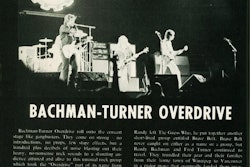Mountain High
Steep grades require patience, judicious use of brakes and proper gearing
If your truck is struggling to pull a heavy load uphill, veteran truckers advise shifting down a gear to reduce strain on the engine and fuel use.The old trucking saying is you can go down a hill a million times too slow but you can only do it once too fast.
Speed is one key factor driving professionals say you must keep in mind to successfully pull loads up and down steep grades. Driving slowly might get you some dirty looks from motorists — but you vastly improve your chances of making your delivery every time and reducing the wear and tear on your rig.
Kurt GroteFour truckers who have experienced wheeling through Western mountain passes offer their suggestions on staying safe when elevations rise and fall. They are Kurt Grote, an owner-operator leased to John Christner Trucking and one of the participants in Freightliner’s Trucker Slice of Life program (http://www.sliceoftruckerlife.com); Fred Jones, an owner-operator leased to Davis Transport; Nate McCarty, a driver for ABF in Denver and a captain of America’s Road Team; and Brett Tobin, an owner-operator with his own authority from Medford, Ore.
GEARING
Nate McCartyJones: If my truck is struggling to pull the load uphill, I’ll drop down a gear. It pulls easier and you use less fuel. You’re pulling a little slower but you’re not maxing out the engine on horsepower. You have a little leeway if you come to a steeper climb, because you have more power to pull without shifting gears.
When I top the hill, I don’t continue the power and let it coast over the top of the hill. You want to shift down a gear so that your engine brake will hold you back comfortably and you’re barely applying your brakes, if at all.
Brett TobinMcCarty (In a slip-seat operation, McCarty drives different trucks, all 3 years old and newer.): You want to be in the right gear before you start down the grade. The rule of thumb used to be with older trucks you would descend in the same gear you ascended in. With the newer trucks, it’s a little different with the aerodynamics and the more powerful engines. Now you’ll want to use at least one lower gear going down the hill than what was required going up.
You want to be in your transmission’s sweet spot in the proper rpm range so you’re not using too much fuel. When I drop below 1,100 rpm, that’s where I want to upshift to a higher gear.
Grote: The bigger the hill, the lower the gear. When going downhill, as on Donner Pass or Cajon Pass into Los Angeles, with a 45-mph speed zone, shift it down to ninth, apply the engine brake and take it down nice and slow. You’re not going to heat up your brakes. The steepness of the hill is going to determine what gear you’re in.
Tobin: Generally speaking, if you go up in fourth gear, you’ll come down in third gear, or a difference in one gear between going up and coming down.
SPEEDS
Grote: I use cruise control whenever possible and never set it against speed limits. If the limit is 72, I’ll set my cruise control at 66 or 68 and put my foot on the accelerator a bit. If you’re just using cruise control, you’re losing momentum. By putting your foot into it, you’re loading your motor to use your horsepower and torque all the way through the hill. At the top of the hill, let your cruise control take over and throw in the engine brake instead of letting it free-roll down the hill.
Fred Jones recommends not to set your trailer brakes overnight in cold weather because they could freeze.Tobin: My normal highway speed is 55 mph, so I tend to take things slower. The slower you go, the more weight you have on the ground. If you’re light and driving in wind, you don’t want to go too fast. In the winter, do everything slower. Speed of 35 mph is as fast as you want to go on packed powder no matter what weight you’ve got. I generally go up a hill at 25 mph.
Jones: You want to gear down enough to limit your speed on a downhill. If you’re coming around a corner on a downhill and you’ve been using your brakes, you may not be able to stop for a hazard.
McCarty: Select a safe speed. I don’t think every state always posts a safe speed for trucks, so you should be familiar with what’s safe for your load, your vehicle, road conditions, the grade and the weather conditions.
BRAKING
McCarty: The most effective technique is stab braking. You choose the proper gear at the top of the grade — you don’t want to have to downshift on the way down — and apply the brakes to feel a definite slowdown. When you reach the speed limit, you apply the brakes again and release when you’re 5 mph below the limit. Make sure your brakes are well-adjusted and have plenty of pad.
Tobin: If you’re going downhill and need to use your brakes, use them only once at the top and no more pressure than 5 pounds. If you need more than 5 pounds, you’re going too fast. If you use an engine brake, you can go a little faster using 5 pounds of air pressure, but the engine brake won’t hold unless you slow way down. The most pressure you want to put on your brakes is your big toe.
Jones: If you’re going too fast where you have to rely on your engine brake as well as your truck brakes, they will get too hot. The hotter they get, the less braking power you have. My 2005 truck has 661,000 miles on it, and I’ve never had to replace the brakes.
Truckers advise to slow down and gear down to avoid spinouts in winter.Grote: In the winter, you want to rein back speed downhill and not use the engine brake. On snowpack on the downhill, the trailer is pushing you. If the tractor is holding back, your trailer will want to pass you. You want to gear down to a much lower gear, use your brakes sparingly and not apply the engine brake.
GRADES
McCarty: Pre-plan your route if you can. If you have a heavy load and there’s a way to avoid steeper grades, take it. When I went to Salt Lake City, I used to take the longer [of two possible routes] so I didn’t have to worry about steeper grades.
Jones: It’s a totally different ballgame in winter. On mountain passes you’re not using your engine brake. When climbing, you want to be in a high-enough gear that your truck will pull but not have too much power that it will spin the wheels. When going downhill, you want to be in a much lower gear at a slower speed than in summer. Use your truck brakes lightly.
Grote: It’s all about feel. You want to know immediately when a tire starts to spin on you [so you can] get your foot off the accelerator, or you’ll end up in a jackknife situation. It’s all about torque when you’re pulling up a hill. When you start to spin, torque will take over and you’re going to spin out.
Some of the grades are pretty steep, and you might be dropping down to 30 mph. Most of the time I’m pulling 78,000 pounds so it’s going to take time to get up that hill. And Donner Pass (in California) is such a long pass, I’ve seen guys burn out their brakes.
FINAL ADVICE
McCarty: Your pre-trip inspection is always one of the most important things you do every day.
Tobin: Run your lights in rain and snow. The problem with LED lights is they don’t run hot enough to burn off the snow. You’ll have to stop and wipe off your brake lights. And brush off the snow from the radiator to maintain airflow.
Grote: Patience, patience and more patience. And if you’re going to run in Western states, you’re going to have to learn to chain up.
Jones: Don’t set your trailer brakes overnight in cold weather or they may freeze up. Once you stop for the night in cold weather, after a half hour move your rig a foot or so. Otherwise your tires could get stuck in the depression caused by your hot tires melting the ice.









